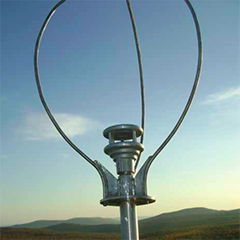Since being founded in 1881, G. Lufft GmbH has been the leader in the production of climatological measuring equipment – always with the motto “tradition meets innovation”. Now, they bring their wealth of experience to the offshore market with a new range of weather sensors. PES investigates…
All of the digital Lufft sensors of today evolved from the mechanical sensors of the past. The first one to be sold by Gotthilf Lufft, the founder of the measurement and control technology company from Fellbach, was a barometer. He wanted to produce his own devices instead of importing them from France. The second and third-introduced measurement instruments were an altimeter and a compass. Step by step the portfolio grew, and Gotthilf proved to be an extremely market-aware innovator – this was towards the end of the 19th century. Nowadays the smart measurement tools run automatically and are remote controlled.
Lufft’s philosophy is to offer highly flexible, modular, all in one sensor systems in order to cover the whole market and meet all customer requirements – no matter if they come from the meteorology, solar or wind energy industries. The result is the weather sensor family; a modular and multifunctional sensor portfolio with an open UMB protocol.
The most robust, outstanding WS member is the VENTUS-UMB. It refers to an ultrasonic anemometer made of stainless and very strong metal, which is also used for ship propellers.
This is clearly a critical component for the operation and the safety of wind power plants. Before a wind energy station is accepted, there are many obstacles that have to be overcome, and the highest possible reliability is necessary. The evidence and documentation which needs to be handed over to the customer can be compared with a whole “application dossier”. Successful corrosion, vibration, ice and HALT (destruction) test certificates must be presented to the wind turbine operators. “Absolute absence of errors” should be reached with the help of continuous improvement processes. However, the product price should be very low.



























